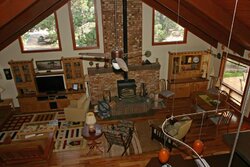We have just replaced our Vermont Castings Woodstove we had for over 20 years with a Regency F1100 to heat our addition. We have never had a blower on a woodstove (it was free promotion regency was running) What is the best way to use the blower if at all?
Thanks,
Shelby
Thanks,
Shelby


 )
)